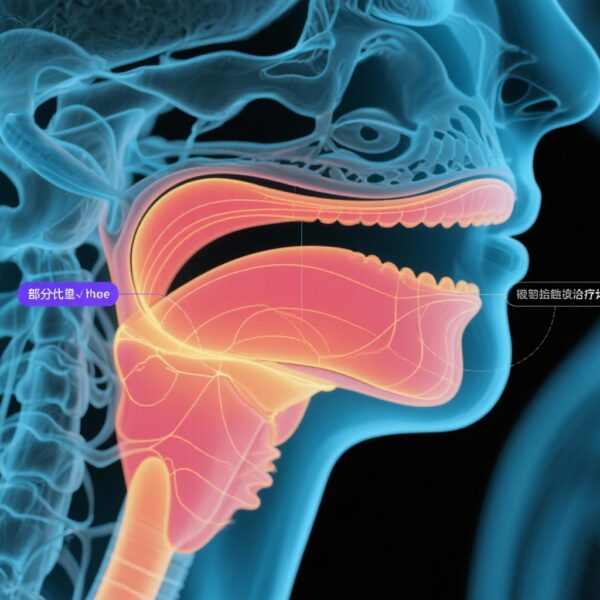Highlight
- This pooled analysis clarifies the timing and likelihood of true colon cancer recurrence, distinguishing it from competing health events like death and second primary tumors.
- Recurrence risk peaks within the first year after surgery and sharply declines, dropping below 0.5% at 6 years, supporting a practical definition of cure in stage II to III colon cancer.
- A nuanced competing risks approach reveals that apparent recurrence rates are inflated by other events, especially in older patients, and that female patients have significantly lower relapse risk.
- This evidence informs optimized follow-up duration, enhances patient communication about prognosis, and supports reducing unnecessary long-term surveillance.
Study Background and Disease Burden
Colon cancer (CC) is a common malignancy and a leading cause of cancer-related mortality worldwide, with stage II and III disease often treated by surgical resection followed by adjuvant chemotherapy to reduce recurrence risk. Despite advances in treatment, the precise definition of “cure” remains elusive. Conventional clinical endpoints, such as overall survival or disease-free survival, often include deaths from any cause and second primary tumors as events, blurring the distinction between true cancer relapse and competing health events. This complicates prognostication and communication with patients regarding their long-term outlook. Understanding when the risk of true relapse from the initial colon cancer becomes negligible is paramount to defining cure and guiding follow-up care strategies.
Study Design
This study is a pooled analysis of individual patient-level data from 15 phase 3 randomized clinical trials conducted between 1996 and 2015, included in the Adjuvant Colon Cancer Endpoints (ACCENT) and International Duration Evaluation of Adjuvant Chemotherapy (IDEA) databases. It encompassed 35,213 patients with stage II to III colon cancer who underwent curative-intent radical surgery followed by various adjuvant chemotherapy regimens—fluoropyrimidines alone or combined with oxaliplatin or biologic agents. The median follow-up period was at least six years.
Outcomes of interest included the time to colon cancer–related recurrence, explicitly separating relapse events from deaths and second primary tumors, which were considered competing risks. Statistical analyses incorporated Kaplan-Meier and Aalen-Johansen cumulative incidence methods to accurately estimate recurrence probabilities while accounting for competing events. Additionally, Cox proportional hazards models assessed prognostic factors such as sex, disease stage, and tumor characteristics.
Key Findings
The cohort consisted predominantly of middle-aged and older adults with a mean age of 60.2 years, with a slight male predominance (54.9%). The analysis demonstrated that colon cancer recurrence risk peaked between six and twelve months post-surgery, with an incidence rate of 6.4%. Subsequently, the incidence rate showed a continuous decline, falling below the predefined threshold for cure—a recurrence risk under 0.5%—approximately six years after surgery.
Notably, an anomalous increase in recurrence was observed beyond 10 years, peaking at 2.0% at approximately 12.5 to 13 years, but this was exclusive to the MOSAIC trial dataset and may warrant further investigation. When considering competing risks, death and second primary malignancies inflated the apparent recurrence risk, particularly in older patients, underscoring the importance of appropriate statistical modeling to distinguish true relapses.
Sex-based stratification revealed a significantly lower cumulative incidence of relapse in female patients compared with males (hazard ratio [HR] 0.58; 95% confidence interval [CI], 0.45–0.76; P < .001), suggesting potential biological or treatment-response differences.
These findings collectively suggest that the risk of recurrence essentially becomes negligible after six years, constituting a practical and clinically meaningful definition of cure in this patient population.
Expert Commentary
This comprehensive pooled analysis addresses a crucial gap in colon cancer survivorship by refining the conceptual and temporal definition of cure. Previous studies often conflated death and second primaries with cancer recurrence, which could lead to overestimation of residual disease risk. The application of competing risk methodology enhances the precision of long-term prognosis, which is vital for patient counseling and therapeutic decision-making.
The observation of lower relapse risk in females aligns with epidemiological data indicating sex-related differences in colon cancer biology and outcomes. However, the isolated late recurrence peak in the MOSAIC trial merits cautious interpretation as it may stem from trial-specific characteristics or statistical variation.
Limitations include heterogeneity in chemotherapy regimens across trials and evolving treatment standards over the study period, which may impact generalizability to current clinical practice, especially with newer biologic agents and immunotherapies. Furthermore, the minimum median follow-up of six years, though substantial, might overlook ultra-late recurrences in a subset of patients.
Nevertheless, these findings provide a robust foundation for guideline committees to reconsider surveillance intervals and duration post-curative therapy, potentially reducing patient anxiety and healthcare resource utilization.
Conclusion
This landmark pooled analysis involving over 35,000 patients with stage II to III colon cancer establishes that the risk of true colon cancer relapse falls below 0.5% by six years after surgery and adjuvant chemotherapy. This evidence supports adopting a definition of cure as sustained recurrence risk below this threshold, facilitating clearer patient communication and rationalizing follow-up strategies. Recognition of this milestone may allow clinicians to confidently tailor surveillance intensity, potentially limiting costly and burdensome long-term monitoring when the probability of relapse approaches zero.
Future research should prospectively validate this definition across diverse patient populations and evolving therapeutic paradigms, as well as explore biological mechanisms underlying sex disparities and late recurrences. Importantly, integrating such evidence-based benchmarks can improve quality of life and resource allocation in colon cancer survivorship care.
References
Pastorino A, Liu H, Pederson L, Martelli V, Iveson T, de Gramont A, Alberts SR, George TJ, Yothers G, Harkin A, Labianca R, Taieb J, Schmoll HJ, Twelves C, Wolmark N, Saltz LB, Souglakos I, Goldberg RM, Kerr R, Lonardi S, Yoshino T, Puccini A, André T, Shi Q, Sobrero A; ACCENT/IDEA Group. The Definition of Cure in Colon Cancer: A Pooled Analysis of 15 Randomized Clinical Trials. JAMA Oncol. 2025 Oct 2:e253760. doi:10.1001/jamaoncol.2025.3760. Epub ahead of print. PMID: 41037274; PMCID: PMC12492296.
National Comprehensive Cancer Network. Colon Cancer (Version 3.2024). NCCN Clinical Practice Guidelines in Oncology. Published 2024. Available at: https://www.nccn.org
Sargent DJ, Sobrero AF, Grothey A, et al. Evidence for cure by adjuvant therapy in colon cancer: observations based on individual patient data from 20,898 patients on 18 randomized trials. J Clin Oncol. 2009;27(6):872-877.doi:10.1200/JCO.2008.17.6824
AI Image Prompt for Thumbnail
“A clinical oncologist reviewing long-term survival and recurrence graphs of colon cancer patients on a digital tablet in a modern hospital setting, emphasizing data analysis and patient care.”


